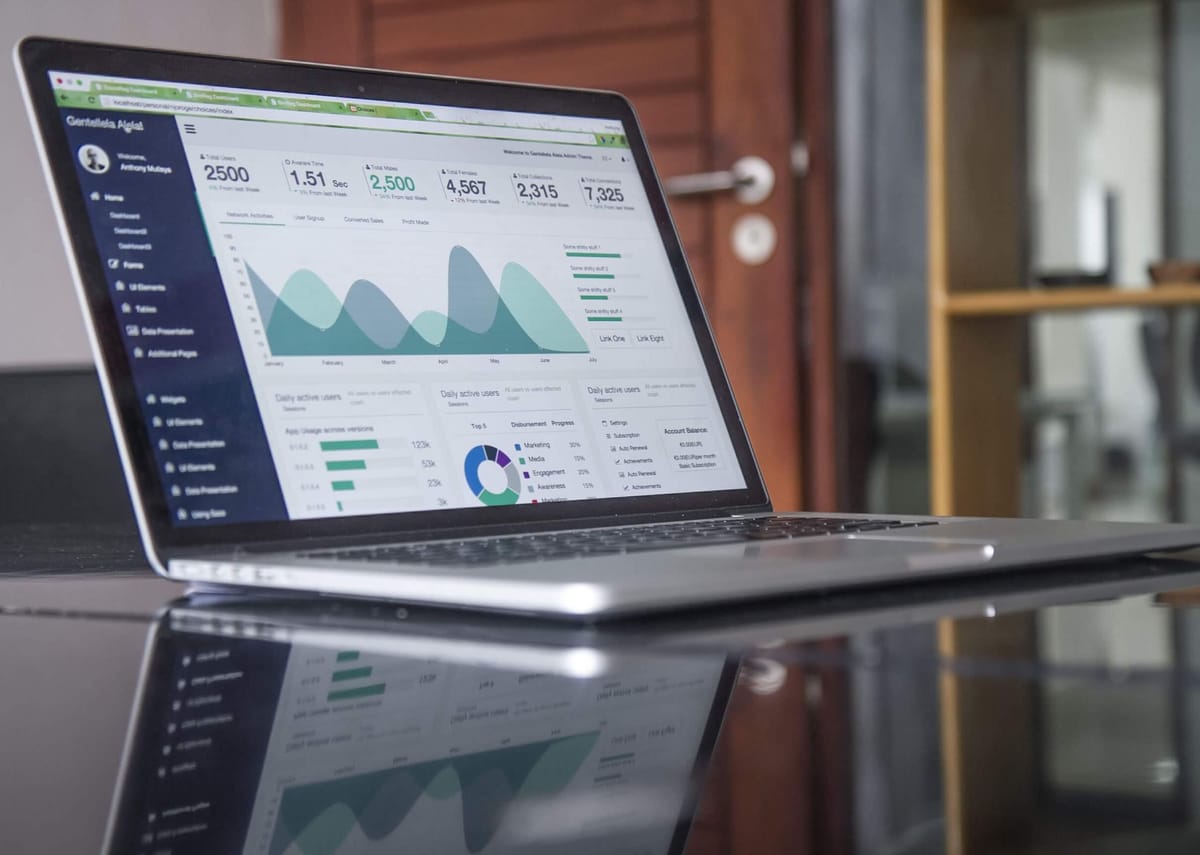In today's competitive market, businesses need to understand and optimize their go-to-market (GTM) strategies to drive revenue growth effectively. Central to this strategy is the GTM funnel, which maps out the buyer journey from awareness to purchase and beyond.
By adopting best practices at each stage of the funnel, companies can enhance their customer acquisition, retention, and ultimately, revenue growth.
Here’s a deep dive into the GTM funnel and the best practices to maximize its potential.
Understanding the GTM funnel
The GTM funnel, also known as the buyer journey funnel, encompasses all the stages a potential B2B customer goes through before making a purchase. It’s crucial to understand these stages to tailor marketing and sales efforts that meet buyers' needs and expectations at each step.
Stages of the GTM funnel
1. Awareness: A mid-sized software company realizes it has issues with data security and becomes aware of the need for a more robust cybersecurity solution. The buyer, typically an IT manager, identifies the problem.
2. Research: The buyer begins researching various cybersecurity solutions, gathering information through whitepapers, webinars, and industry reports to understand the different options available.
3. Consideration: The buyer, along with the IT team, shortlists several cybersecurity vendors, comparing features, pricing, and customer reviews to determine which solution best fits their requirements.
4. Decision: After thorough evaluation, the buyer decides to go with a particular cybersecurity provider, negotiating terms and finalizing the purchase.
5. Post-purchase: The buyer's company implements the cybersecurity solution, monitors its effectiveness, and evaluates customer support. Based on their experience, the buyer decides whether to renew the contract or consider alternatives in the future.

Best practices for each stage
To effectively guide potential buyers through the GTM funnel, it is essential to adopt best practices tailored to each stage of the buyer journey. These practices help in addressing the specific needs and behaviors of buyers, ensuring a smooth transition from awareness to post-purchase.
By implementing these strategies, businesses can enhance customer engagement, improve conversion rates, and drive sustainable revenue growth. Let’s explore the best practices for each stage of the GTM funnel:
Awareness: Capturing attention
- Content marketing: Create valuable content that addresses common pain points and educates potential customers. Blogs, infographics, and social media posts are effective tools. Understanding and utilizing detailed buyer personas is essential for creating content that resonates with your target audience.
- SEO optimization: Ensure your content is easily discoverable by optimizing it for search engines. Use relevant keywords and maintain a strong online presence. High-quality content not only attracts prospects but also positions your brand as a thought leader in the industry.
- Branding: Establish a strong brand identity that resonates with your target audience and makes your product or service memorable. Consistent branding across all channels builds trust and recognition.
Research: Providing value
- Educational resources: Offer whitepapers, eBooks, webinars, and detailed guides that help prospects understand their problems and the potential solutions. These resources should be aligned with the buyer personas to address specific pain points and needs.
- Customer reviews and testimonials: Showcase positive reviews and testimonials to build credibility and trust with potential customers. Real-life success stories demonstrate the value of your product.
- Interactive tools: Implement calculators, quizzes, and assessment tools that engage users and provide personalized insights. These tools can help prospects see the direct benefits of your solutions.

Consideration: Highlighting differentiators
- Comparative content: Develop comparison charts and competitor analysis to highlight the unique benefits of your product or service. Providing clear comparisons helps prospects make informed decisions.
- Case studies: Share in-depth case studies that demonstrate how your solutions have successfully addressed similar challenges for other customers. According to Jeff Everton-Leyef, Sr. Manager, Sales Enablement at CDK Global, showcasing measurable outcomes from previous clients can significantly influence the decision-making process.
- Free trials/demos: Offer free trials or product demos to allow prospects to experience the value of your product firsthand. Hands-on experience can be a decisive factor for many buyers.
Decision: Simplifying the purchase
- Clear CTAs: Use clear and compelling calls-to-action (CTAs) that guide prospects towards making a purchase. Make the next steps obvious and easy to follow.
- Personalized offers: Provide personalized discounts or offers based on the prospect's behavior and preferences. Personalization can increase conversion rates by making the offer more relevant.
- Easy purchase process: Simplify the checkout process with a user-friendly interface and multiple payment options. A smooth, hassle-free purchase experience can reduce cart abandonment.
Post-Purchase: Ensuring satisfaction
- Onboarding: Provide a seamless onboarding process to help new customers get started with your product or service. Effective onboarding can enhance customer satisfaction and reduce churn.
- Customer support: Offer exceptional customer support to address any issues and ensure customer satisfaction. Proactive customer support can turn a one-time buyer into a loyal customer.
- Loyalty programs: Implement loyalty programs and regular follow-ups to encourage repeat business and build long-term relationships. Recognizing and rewarding loyal customers fosters ongoing engagement.

Connecting revenue growth to the GTM funnel
Revenue growth is all about increasing a company’s sales over time. It’s a vital sign of how well a business is doing financially and how it’s performing overall. There are several ways to achieve revenue growth, such as selling more products, raising prices, entering new markets, and launching new offerings.
Key metrics for measuring revenue growth
- Year-over-year growth: Compares revenue from one period to the same period the previous year.
- Compound annual growth rate (CAGR): Calculates the average annual growth rate of revenue over a specific time frame.
- Customer lifetime value (CLV): Estimates the total revenue a business can expect from a single customer over the duration of their relationship.
- Average revenue per user (ARPU): Measures the revenue generated per user or customer.

How the GTM funnel drives revenue growth
The GTM funnel, also known as the buyer journey funnel, is a strategic model that outlines the stages a potential customer goes through, from becoming aware of a product to making a purchase and beyond.
Each stage offers opportunities to engage and influence buyers, ultimately driving revenue growth.
- Awareness stage: Effective marketing strategies that increase brand visibility can attract more potential customers, filling the top of the funnel and boosting revenue potential.
- Research and consideration stages: Providing valuable content and highlighting what makes your product unique helps nurture leads and move them through the funnel more efficiently, increasing the likelihood of conversion.
- Decision stage: Making the purchase process simple and offering personalized incentives can improve the buyer experience, leading to higher conversion rates and increased revenue.
- Post-purchase stage: Delivering excellent customer support and implementing loyalty programs ensure customer satisfaction, encouraging repeat business and increasing the lifetime value of each customer.
By optimizing each stage of the GTM funnel, businesses can better attract, engage, and convert prospects into loyal customers, thereby driving sustainable revenue growth.

Driving revenue growth through the GTM funnel
Optimizing each stage of the GTM funnel is essential for driving revenue growth. Here are some additional best practices to consider:
Data-driven decisions
Analytics: Use analytics to track customer behavior and funnel performance. Identify drop-off points and areas for improvement. Regularly analyze data to make informed decisions and optimize strategies.
A/B testing: Conduct A/B testing on different marketing strategies to determine what works best for your audience. Continuous testing and iteration can lead to significant performance improvements.
Sales and marketing alignment
Collaboration: Ensure that your sales and marketing teams are aligned in their goals and strategies. Regular meetings and shared KPIs can help maintain alignment. In turn, seamless communication between teams ensures a consistent customer experience.
Consistent messaging: Maintain consistent messaging across all channels to provide a unified experience for prospects and customers. Consistency builds trust and reinforces brand identity.
Continuous improvement
Feedback loop: Establish a feedback loop with customers to gather insights and continuously improve your product or service. Actively listening to customer feedback helps in refining offerings and enhancing satisfaction.
Market trends: Stay updated with market trends and adapt your GTM strategies accordingly. Being responsive to changes in the market can give you a competitive edge.

Utilizing buyer personas
Detailed buyer personas: Create detailed buyer personas to better understand your target audience. This includes demographics, pain points, motivations, and buying behavior. As highlighted by Tanwistha Gope, buyer personas are crucial for tailoring marketing efforts effectively.
Personalized content: Develop personalized content and marketing strategies that resonate with each buyer persona to improve engagement and conversion rates. Personalized approaches can significantly enhance the relevance and impact of your campaigns.
Revenue enablement
Revenue enablement strategies: Implement revenue enablement strategies to ensure that all customer-facing teams are equipped with the right tools and information to drive sales and customer satisfaction. Jeff Everton-Leaf also emphasizes that well-coordinated revenue enablement can streamline processes and boost performance.
Integrated technologies: Use integrated technologies to streamline operations and improve communication between sales, marketing, and customer service teams. Technology integration can enhance efficiency and data sharing across departments.
Focus on growth stage
Tailored GTM strategies for growth stage: For growth-stage B2B SaaS startups, tailor your GTM strategies to focus on scaling operations and capturing market share. This includes refining your value proposition, expanding your target market, and optimizing your sales processes. Scalable and adaptable GTM strategies are important for growth-stage companies.
Scalable processes: Develop scalable processes that can support rapid growth without compromising on quality or customer experience. Scalability ensures that growth can be managed effectively and sustainably.

Buyer journey frameworks
Framework implementation: Implement buyer journey frameworks to focus your GTM strategy effectively. This involves mapping out the buyer journey, identifying key touchpoints, and optimizing each interaction to drive conversions. Using clear frameworks is crucial in aligning GTM efforts.
Continuous monitoring: Continuously monitor and refine your buyer journey frameworks based on customer feedback and market trends to ensure they remain effective and relevant. Regular updates ensure that your strategies evolve with changing market dynamics.
Final thoughts
By understanding the GTM funnel and implementing these best practices, businesses can effectively guide prospects through their buyer journey, enhance customer satisfaction, and drive sustainable revenue growth.
Remember, the key to success lies in continuously optimizing each stage of the funnel and staying attuned to your customers' needs and behaviors.
Mastering the GTM funnel and adopting best practices at each stage is essential for businesses aiming for revenue growth. By focusing on the customer journey, providing valuable content, and aligning sales and marketing efforts, companies can create a seamless and effective path to purchase. Implement these strategies to enhance your GTM funnel and watch your revenue soar.





